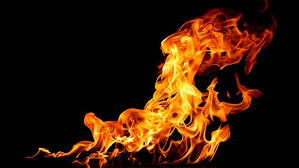
Breaking News
 Backed by Tech Billionaires, Silicon Valley Startup Quietly Weighs Plan...
Backed by Tech Billionaires, Silicon Valley Startup Quietly Weighs Plan...
 Dentistry Lies Things Your Dentist Won't Tell You!
Dentistry Lies Things Your Dentist Won't Tell You!
 Two massive quakes in 48 hours spark 'megaquake week' warnings
Two massive quakes in 48 hours spark 'megaquake week' warnings
 America's Rapidly Growing Happiness Deficit
America's Rapidly Growing Happiness Deficit
Top Tech News
 This tiny dev board is packed with features for ambitious makers
This tiny dev board is packed with features for ambitious makers
 Scientists Discover Gel to Regrow Tooth Enamel
Scientists Discover Gel to Regrow Tooth Enamel
 Vitamin C and Dandelion Root Killing Cancer Cells -- as Former CDC Director Calls for COVID-19...
Vitamin C and Dandelion Root Killing Cancer Cells -- as Former CDC Director Calls for COVID-19...
 Galactic Brain: US firm plans space-based data centers, power grid to challenge China
Galactic Brain: US firm plans space-based data centers, power grid to challenge China
 A microbial cleanup for glyphosate just earned a patent. Here's why that matters
A microbial cleanup for glyphosate just earned a patent. Here's why that matters
 Japan Breaks Internet Speed Record with 5 Million Times Faster Data Transfer
Japan Breaks Internet Speed Record with 5 Million Times Faster Data Transfer
 Advanced Propulsion Resources Part 1 of 2
Advanced Propulsion Resources Part 1 of 2
 PulsarFusion a forward-thinking UK aerospace company, is pushing the boundaries of space travel...
PulsarFusion a forward-thinking UK aerospace company, is pushing the boundaries of space travel...
 Dinky little laser box throws big-screen entertainment from inches away
Dinky little laser box throws big-screen entertainment from inches away
 'World's first' sodium-ion flashlight shines bright even at -40 ºF
'World's first' sodium-ion flashlight shines bright even at -40 ºF
Space fire extinguisher sucks instead of blows

Instead of spraying out extinguishing agents at a fire, the Vacuum Extinguish Method (VEM) sucks the flames and burning materials into a vacuum chamber, where they can be safely suffocated or extinguished.
Fire is one of the most frightening emergencies that can happen aboard a manned spacecraft, submarine, or other enclosed, special environments. Not only can one be about as deadly as a fire can get, but combating it is extremely difficult, not only because of the heat and smoke given off, but because the extinguishing agents can be almost as dangerous in an enclosed space.
This is the reason why firefighting teams aboard submarines and the International Space Station need to don oxygen masks before dealing with the fire. Even if the agent used is as innocuous as carbon dioxide, the crew can still suffocate without breathing apparatus. Even water in a weightless environment can be hazardous.



